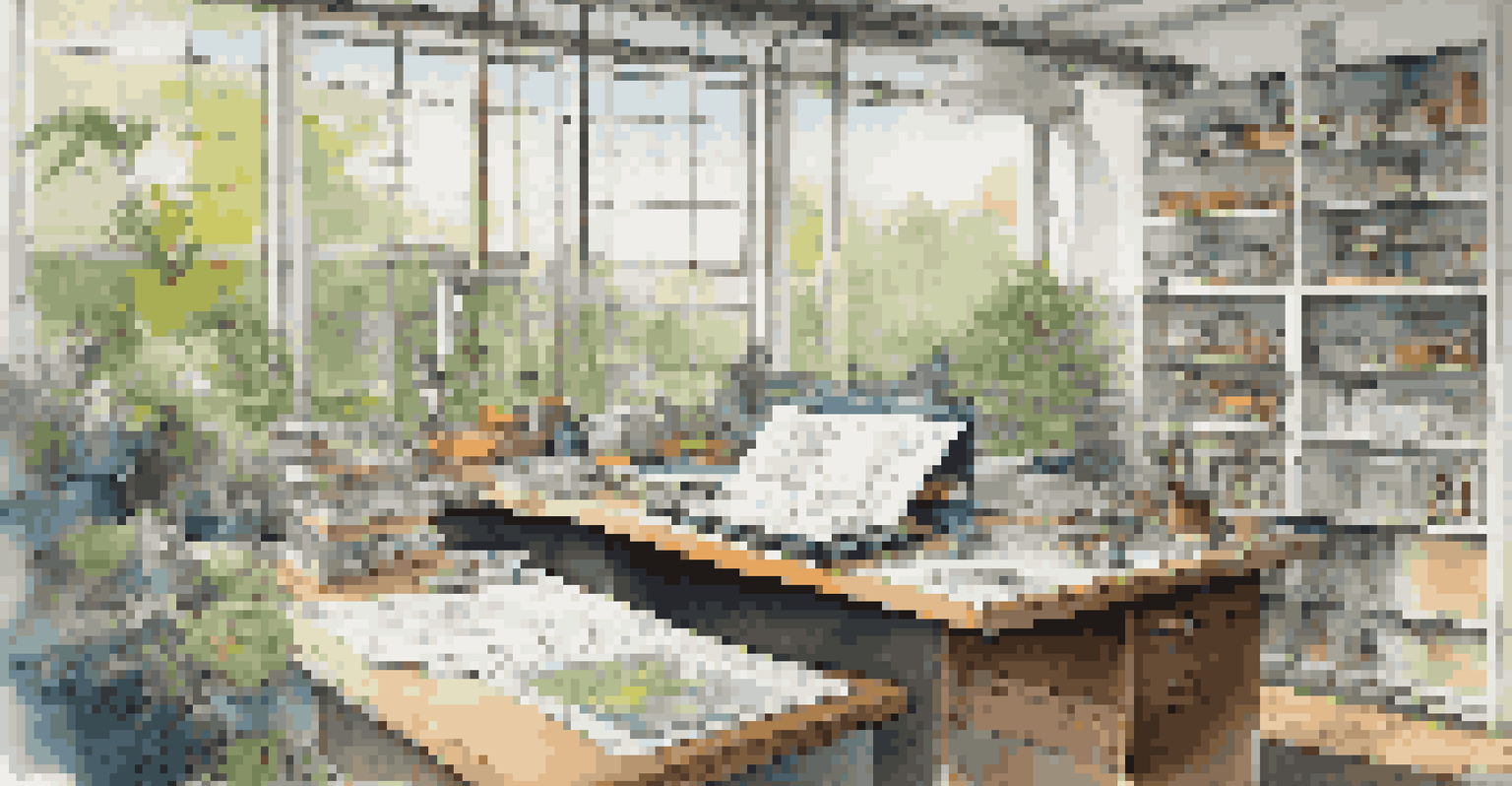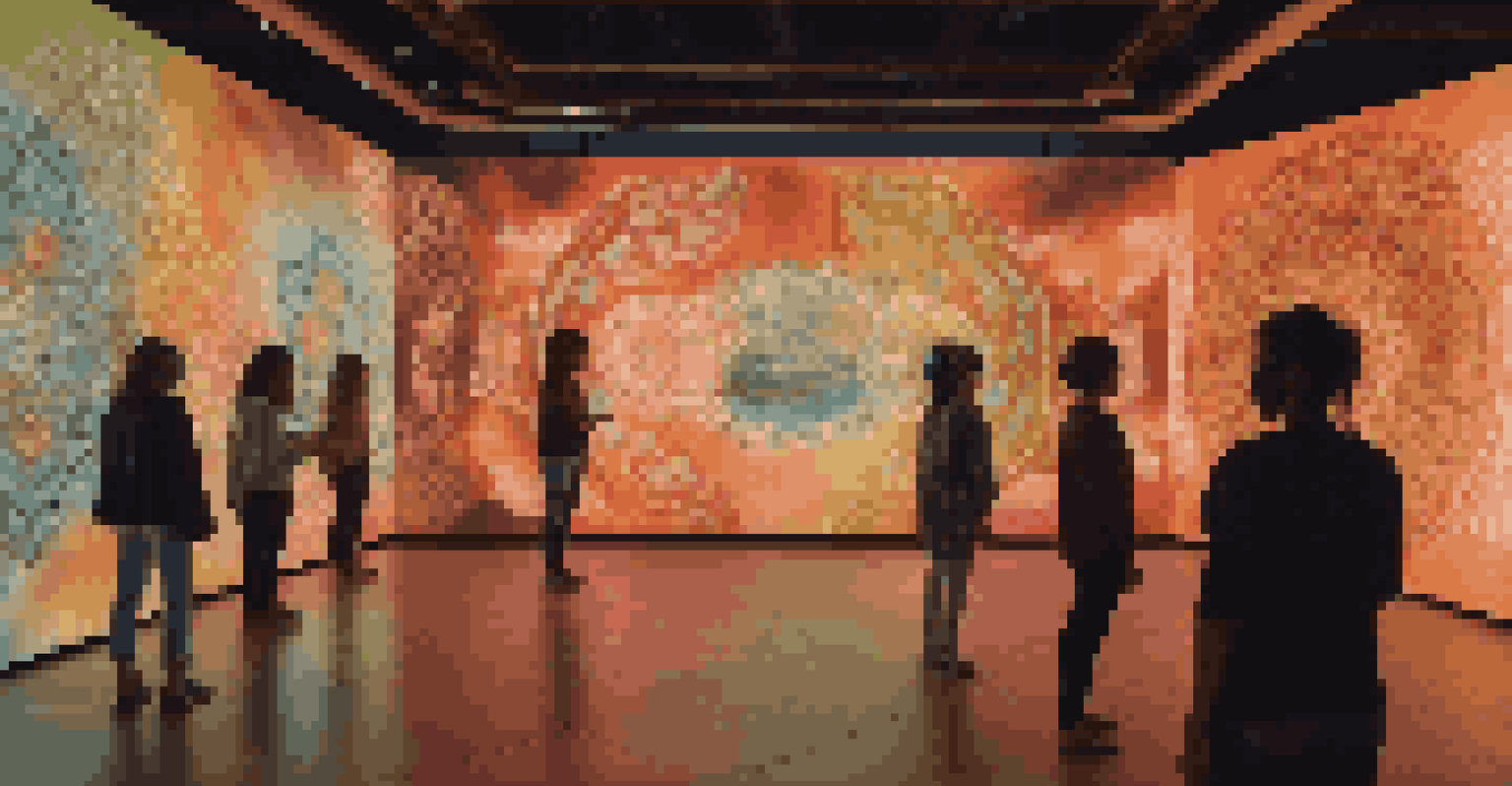Exploring Cultural Arts in STEM: Diverse Perspectives and Ideas

The Intersection of Arts and STEM: A Holistic Approach
In today’s rapidly evolving world, the integration of arts into STEM—now popularly referred to as STEAM—has become increasingly vital. This holistic approach emphasizes that creativity is just as important as technical skills in driving innovation. By merging the analytical with the imaginative, we open doors to new perspectives and solutions.
Creativity is thinking up new things. Innovation is doing new things.
Consider architects who blend scientific principles with artistic vision to create structures that are not only functional but also aesthetically pleasing. This synergy encourages engineers to think outside the box, leading to inventions that are as beautiful as they are practical. The arts challenge conventional approaches, inspiring STEM professionals to explore uncharted territories.
Moreover, fostering an appreciation for the arts within STEM can enhance problem-solving skills. When individuals learn to view challenges from multiple angles, they are more equipped to devise comprehensive and innovative solutions. This interplay fosters a culture of collaboration, where diverse ideas flourish.
Diverse Perspectives: A Rich Tapestry of Ideas
Cultural diversity brings a wealth of perspectives to both arts and STEM fields. When individuals from various backgrounds contribute to a project, they enrich the creative process with unique insights shaped by their experiences. This diversity not only enhances innovation but also fosters inclusivity within teams.

For example, in a tech startup, having team members from different cultural backgrounds can lead to the development of products that cater to a global audience. Each individual may offer different user experiences, resulting in a more universally appealing design. This inclusivity is essential in a world that values global connectivity.
STEAM Enhances Innovation
Integrating arts into STEM fosters creativity, leading to innovative and aesthetically pleasing solutions.
Additionally, diverse perspectives can challenge the status quo, leading to groundbreaking discoveries. When teams embrace a myriad of viewpoints, they stimulate critical thinking and encourage experimentation, paving the way for advancements that might not emerge in a homogenous environment.
Art as a Tool for Engagement in STEM Education
Incorporating arts into STEM education can significantly enhance student engagement. Creative projects, such as designing a poster or creating a short film, allow students to express their understanding of scientific concepts in imaginative ways. This not only makes learning more enjoyable but also deepens their comprehension.
Art is the most beautiful of all lies; it is a lie that tells the truth.
For instance, a classroom project that combines art and biology could involve students illustrating the life cycle of a butterfly. This hands-on approach not only reinforces factual knowledge but also sparks curiosity and creativity. Students are more likely to remember and connect with the material when it is presented in a dynamic and interactive manner.
Moreover, engaging with the arts fosters essential skills such as collaboration, communication, and critical thinking. These skills are invaluable in STEM fields, where teamwork and innovative problem-solving are paramount. By blending arts with STEM, educators prepare students for real-world challenges.
Celebrating Cultural Heritage Through STEM Initiatives
Cultural heritage plays a significant role in shaping our understanding of both arts and STEM. Initiatives that celebrate indigenous knowledge and traditional practices can enhance STEM education and inspire new research. For example, indigenous farming techniques can offer sustainable insights into modern agriculture.
By integrating cultural heritage into STEM projects, we honor the past while paving the way for future innovations. This not only enriches the educational experience but also fosters respect for diverse cultural practices and their contributions to science and technology.
Diversity Fuels Creativity
Cultural diversity within teams enriches the creative process, resulting in more innovative and inclusive designs.
Furthermore, showcasing cultural art forms, such as dance or music, alongside scientific themes can create a more inclusive environment. This approach encourages students to appreciate the interconnectedness of all disciplines, reinforcing the idea that knowledge is a collective, shared journey.
Technology and the Evolution of Cultural Arts
The advent of technology has transformed the landscape of cultural arts, influencing how we create and engage with art. Digital platforms allow artists to reach global audiences, while also integrating new mediums into traditional practices. This evolution creates a vibrant dialogue between technology and creativity.
For example, virtual reality (VR) can transport audiences into immersive art experiences, redefining how we perceive cultural works. Artists are now able to experiment with new tools and techniques, pushing the boundaries of what art can be. This fusion of technology and arts not only expands creative possibilities but also enhances appreciation among diverse audiences.
Moreover, technology can facilitate collaboration among artists and STEM professionals, resulting in innovative projects that blend both fields. This collaboration is crucial in addressing contemporary issues, as it encourages a multidisciplinary approach to problem-solving.
Inspiration from Global Arts: A Catalyst for STEM Innovation
Global arts can serve as a powerful source of inspiration for innovation within STEM fields. Artists from different cultures often tackle similar themes but express them through unique lenses. This diversity of thought can spark new ideas and approaches in scientific fields.
For example, the intricate designs found in traditional textiles may inspire new algorithms in computer programming. Similarly, the patterns in nature, as depicted in various art forms, can lead to breakthroughs in biomimicry, where nature's designs guide innovative engineering solutions. This cross-pollination of ideas can lead to revolutionary discoveries.
Collaboration Drives Solutions
Bringing together artists and STEM professionals can address complex global challenges through creative and analytical thinking.
By embracing global arts, STEM professionals can cultivate a mindset that values creativity and exploration. This openness to diverse influences not only enhances individual projects but also contributes to a broader culture of innovation.
Future Visions: Integrating Arts and STEM for a Better Tomorrow
Looking ahead, the integration of arts and STEM will continue to shape the future of education and innovation. As industries evolve, the need for creative problem solvers who can navigate complex challenges will become increasingly essential. By encouraging this interdisciplinary approach, we can prepare future generations to thrive in an interconnected world.
Moreover, fostering collaborations between artists and STEM professionals can lead to groundbreaking initiatives that address pressing global issues, such as climate change or public health. These partnerships can inspire innovative solutions that draw on both analytical and creative thinking.

Ultimately, the journey towards a more integrated approach is just beginning. By valuing the contributions of both arts and STEM, we can create a more inclusive, innovative, and vibrant future for all.